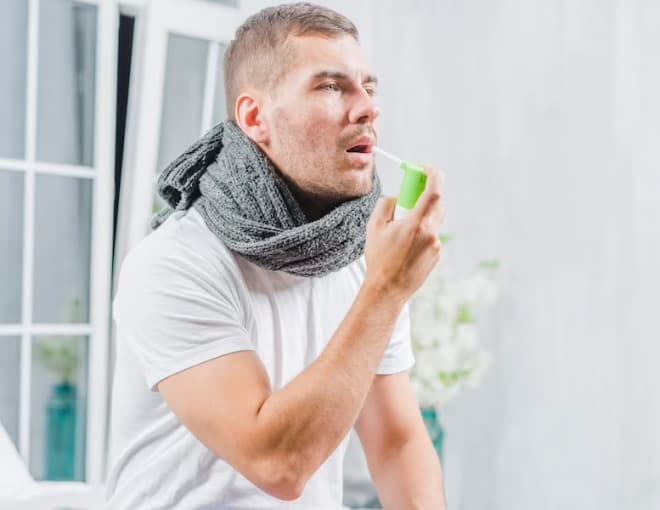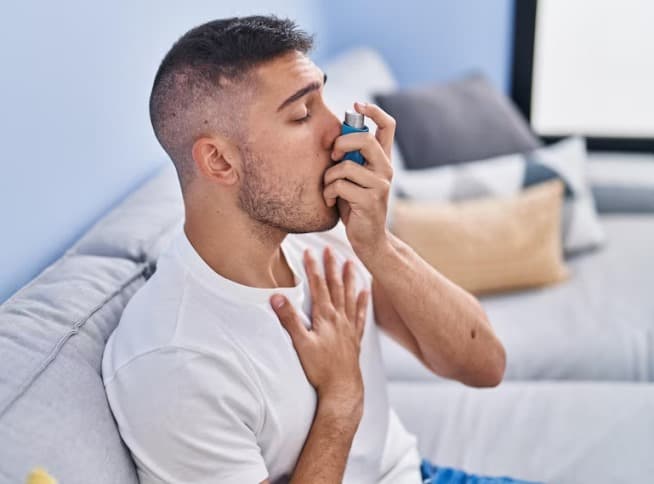How to Nebulize at Home without a Nebulizer
Nebulization is a common medical procedure used to deliver medication directly to the lungs for individuals suffering from respiratory conditions. While nebulizers are widely available and convenient, there may be instances when you find yourself without one at home.
In such situations, it’s important to know alternative methods to nebulize effectively. This article will guide you on how to nebulize at home without a nebulizer, ensuring you can provide relief to yourself or your loved ones when needed.
Table of Contents
What is Nebulization?
Nebulization is a process that converts liquid medication into a fine mist, allowing it to be inhaled directly into the lungs. This method ensures the medication reaches the respiratory system, providing targeted relief for various respiratory conditions.
Nebulizers are commonly used to treat asthma, chronic obstructive pulmonary disease (COPD), bronchitis, and cystic fibrosis, among others.
Importance of Nebulization at Home
Nebulization at home offers several benefits, especially for individuals with chronic respiratory conditions. It provides convenience, allowing for immediate treatment without the need for hospital visits or appointments.
Nebulizing at home also enables individuals to manage their symptoms effectively, reducing the risk of exacerbations and promoting better overall respiratory health.
Common Respiratory Conditions Treated with Nebulization
Before delving into alternative methods, it’s essential to understand the respiratory conditions commonly treated through nebulization.
Asthma
Chronic inflammation and narrowing of the airways characterize asthma, which causes recurrent attacks of wheezing, coughing, chest tightness, and shortness of breath.
Nebulizers are often used to deliver bronchodilators and anti-inflammatory medications, providing quick relief during asthma attacks.
Chronic Obstructive Pulmonary Disease (COPD)
COPD refers to a group of progressive lung diseases, including chronic bronchitis and emphysema. Nebulization is frequently employed to administer bronchodilators and corticosteroids, helping to alleviate symptoms such as shortness of breath and coughing.
Bronchitis
Bronchitis is an inflammation of the bronchial tubes, leading to excessive mucus production, coughing, and chest congestion. Nebulization can assist in loosening mucus and reducing inflammation, providing relief from these symptoms.
Cystic Fibrosis
Cystic fibrosis is a genetic disorder that affects the respiratory and digestive systems. Nebulization plays a crucial role in managing this condition by delivering medications such as mucolytics and antibiotics directly to the lungs, reducing the risk of infections and improving overall lung function.
Alternatives to Nebulizers for Home Nebulization
While nebulizers are the preferred method for home nebulization, there are alternatives available when a nebulizer is not accessible. Here are some options:
Steam Inhalation
Steam inhalation involves inhaling moist, warm air to provide relief for respiratory symptoms. To perform steam inhalation, boil water and transfer it to a bowl.
Place a towel over your head, lean over the bowl, and inhale the steam for about 10-15 minutes. This method helps in loosening mucus and easing congestion.
Ultrasonic Humidifiers
Ultrasonic humidifiers release a fine mist of water vapor into the air, which can be beneficial for individuals with respiratory conditions. By adding medication to the water tank of the humidifier, you can create a nebulizing effect.
However, it’s important to consult with a healthcare professional for guidance on appropriate medications to use with a humidifier.
Metered-Dose Inhalers (MDIs)
Metered-dose inhalers, also known as inhalers or puffers, are portable devices that deliver a measured dose of medication in aerosol form. They are commonly used to treat asthma and can be an alternative for nebulization at home.
MDIs require proper technique and coordination to ensure effective delivery of the medication. It’s crucial to consult with a healthcare professional to learn the correct usage.
Dry Powder Inhalers (DPIs)
Dry powder inhalers are similar to MDIs but deliver medication in powdered form. DPIs require inhalation power to disperse the medication into the lungs.
Like MDIs, proper technique and coordination are essential for effective use. It’s important to follow the instructions provided by the healthcare professional or the medication packaging.
Steps to Nebulize at Home without a Nebulizer
If you find yourself without a nebulizer, follow these steps to perform home nebulization using alternative methods:
Step 1: Gather Supplies
Before you begin, gather the necessary supplies. This may include a bowl for steam inhalation, hot water, towels, medications prescribed by your healthcare professional, an inhaler or dry powder inhaler if available, and a clean, comfortable space.
Step 2: Prepare the Medication
If you have medication prescribed for nebulization, consult with your healthcare professional on how to adapt the dosage for alternative methods. For steam inhalation, no additional preparation is needed.
Step 3: Create a Steam Environment
Boil water and transfer it to a heatproof bowl. Position the bowl on a stable surface. Place a towel over your head, creating a tent-like enclosure, and lean over the bowl. Ensure the towel covers the bowl and your head, trapping the steam. Breathe deeply and slowly, inhaling the steam for about 10-15 minutes.
Step 4: Use a Face Mask or Inhaler
If you have a face mask from a nebulizer, you can use it during steam inhalation. Position the mask securely over your nose and mouth, allowing the steam to enter. Alternatively, if you have an inhaler or dry powder inhaler, follow the instructions provided by your healthcare professional to administer the medication correctly.
Step 5: Breathe Slowly and Deeply
During steam inhalation or inhaler usage, remember to breathe slowly and deeply to ensure the medication reaches your respiratory system effectively. Focus on relaxing and allowing your breaths to penetrate deeply into your lungs. Take your time and maintain a steady breathing rhythm throughout the process.
Benefits and Limitations of Home Nebulization without a Nebulizer
Home nebulization without a nebulizer offers some benefits, such as providing immediate relief when a nebulizer is unavailable. It can be a cost-effective alternative, especially for those who require occasional nebulization.
However, it’s important to note that alternative methods may not deliver the medication as effectively as a nebulizer, and the dosage may need to be adjusted accordingly. Always consult with your healthcare professional to ensure the chosen alternative method is suitable for your specific condition.
FAQs
Can I use essential oils for home nebulization without a nebulizer?
It’s not recommended to use essential oils for home nebulization without a nebulizer. Essential oils can be irritating to the airways and may not provide the desired therapeutic effects. Consult with a healthcare professional for appropriate medication options.
Can children be nebulized at home without a nebulizer?
Home nebulization without a nebulizer can be challenging for children, especially with alternative methods such as steam inhalation. It’s best to consult with a pediatrician for guidance on suitable alternatives and proper dosages for children.
Is it safe to perform home nebulization without a nebulizer if I have a severe respiratory condition?
Severe respiratory conditions require careful management, and it’s crucial to follow the guidance of a healthcare professional. Consult with your healthcare provider before attempting home nebulization without a nebulizer, as they can provide tailored recommendations based on the severity of your condition.
Conclusion
Knowing how to nebulize at home without a nebulizer can be valuable in situations where immediate relief is necessary and a nebulizer is not accessible. Steam inhalation, ultrasonic humidifiers, inhalers, and dry powder inhalers are alternative methods that can help deliver medication to the respiratory system. However, it’s crucial to consult with a healthcare professional for guidance on suitable alternatives, proper medication dosage, and any specific instructions related to your condition.
Performing home nebulization without a nebulizer requires caution, cleanliness, and adherence to recommended procedures. While alternative methods can provide temporary relief, they may not be as effective as a nebulizer. Therefore, it’s important to prioritize obtaining a nebulizer for long-term management of respiratory conditions.

